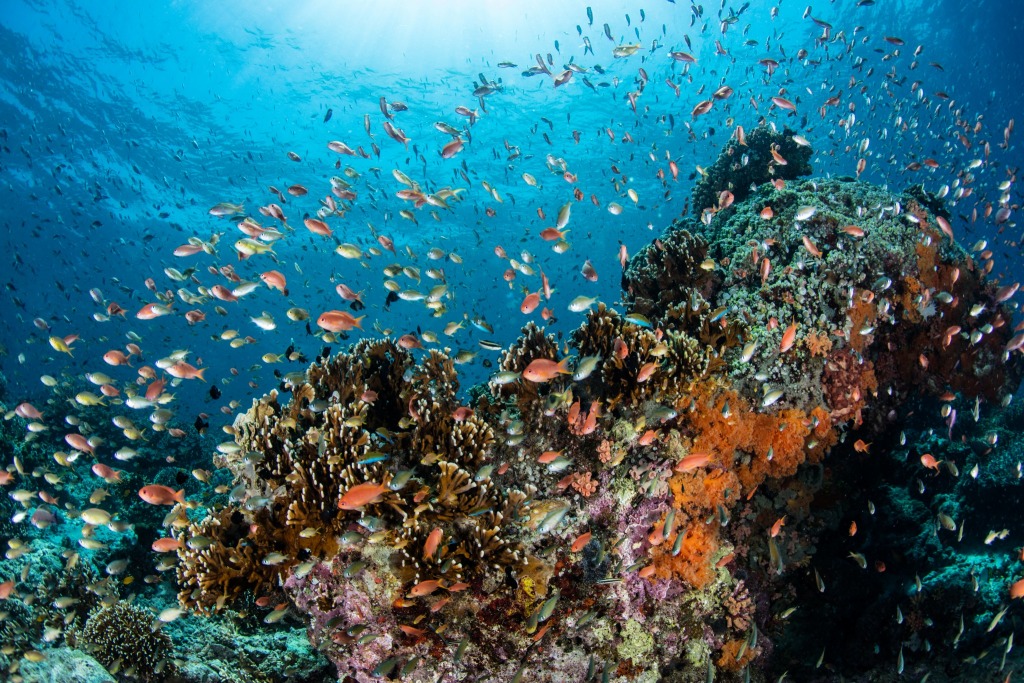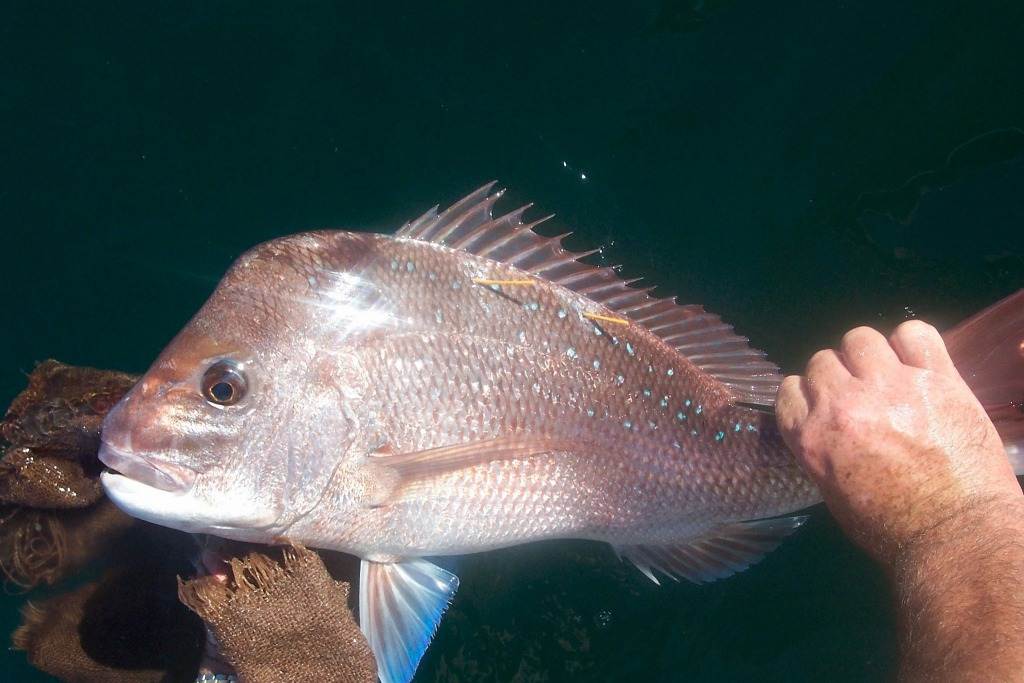A population is the number of animals inhabiting a specific area. To manage the marine environment effectively, marine managers need to know the size and composition of animal populations.
It is unrealistic, if not impossible, to count the exact number of animals that live in the ocean. Instead, researchers employ several techniques to estimate an unknown population size.
Researchers sample a portion of individuals or an area that is representative of the entire population.

Figure 1. It is near impossible to count the exact number of animals that live in the ocean.
To ensure researchers have confidence in their results, they must take into account a range of variables and assumptions that can affect the quality of the data. In doing so, their samples can be considered as representative of the entire population and they are able to make estimates of the population size.
Capture-recapture method
The principle of marking animals (and people), then releasing them to follow or recapture them later, has been known for centuries. Terrestrial animals and birds have been branded, clipped, banded and painted by their owners. Isaak Walton in his Compleat Angler (1653) suggested putting ribbons around the tails of salmon to see if the same fish returned to the same place to spawn. He also mentioned a 15th century recovery of a tagged pike.
The French mathematician Pierre Laplace is credited with establishing the mathematical foundations for the capture-recapture method in 1812, and there have been early applications in estimating human populations by examining birth records to find out the ratio of births to adults.
Scientific fish tagging has its origins in the work of Danish fisheries scientist Carl George Johannes Peterson, who published a paper in 1896 in which the estimated the size of a population of a flounder-type fish called plaice through a capture-recapture method using brass tags. The Petersen tag he invented remains in use.
The mathematics of a simple capture-recapture experiment remains the foundation of tagging projects. Initially, a number of animals of the same population are captured and tagged or branded in some way, then released back into the population. After some time, a second sample is taken to record the proportion of tagged or branded animals recaptured. This proportion is used to estimate the size of the entire population.
However, there are four critical assumptions:
- The population is closed, in the sense that no individual animals have died, are born, or have moved into or out of the area.
- The tag or branding remains intact and these animals survive.
- The second sample is independent of capture in the first sample.
- The tagged or marked animals have mixed evenly back into the population before a second sample is taken.
Due to the above assumptions, estimating populations in the marine environment can be difficult. Researchers employ other population estimation methods when designing experiments, including multiple samples, that allow for migration, birth, death and other biases that take place during the period of the study.
In estuaries and freshwater environments or in other instances where some animal populations are somewhat confined to area, a two-sample capture-recapture experiment can be effective.
Once a population size has been estimated, this can be used as a baseline for comparison with estimates over time to determine changes in the populations and the effectiveness of marine policy. Well-designed capture-recapture studies can provide essential data for such purposes as:
- estimating biomass and the size of fish stocks;
- estimating natural mortality and the structure of species populations;
- revealing biological information such as growth rates, movement, migration and foraging behaviour;
- estimating fishing mortality and exploitation rates;
- examining fishing gear selectivity and vulnerability to gear because of certain behaviour – the number of tagged fish of various species caught by each type of gear;
- tracking the spread of disease;
- identifying the boundaries of stocks and ranges across management regions;
- studying spawning aggregations and dispersal – where the fish have come from and where they go;
- discovering the home ranges and behaviours of long-lived and wide-ranging species such as sharks;
- tracking animals in and out of marine protected areas to see how effective the areas are for certain species and how large they need to be;
- validating other survey methods, such as the ageing of fish using otolith growth rings – fish are injected with chemical markers on a known date and when they are recaptured, researchers can see how many bands were laid down during that period; and
- identifying the source of recruits to adult populations.

Figure 2. Releasing a tagged snapper.
Vocabulary
Assumption
Taken for granted or accepted as true without proof.
Biomass
The estimated total mass of a living organism in a particular area (spawning biomass is the total mass of all mature animals).
Exploitation
The act of being fished, harvested or put to use.
Migration
To move from one habitat to another, usually for purposes of breeding or spawning.
Mortality
Frequency of death.
Population
Animals inhabiting a specified area.
Proportion
A relationship between things or parts of things with respect to comparative magnitude, quantity or degree.
Ratio
Relation in degree or number between two similar things.
Representative sample
A small part of something intended as representative of the whole.
Sample
A portion, piece or segment that is representative of a whole.
Variable
Likely to change or vary.
